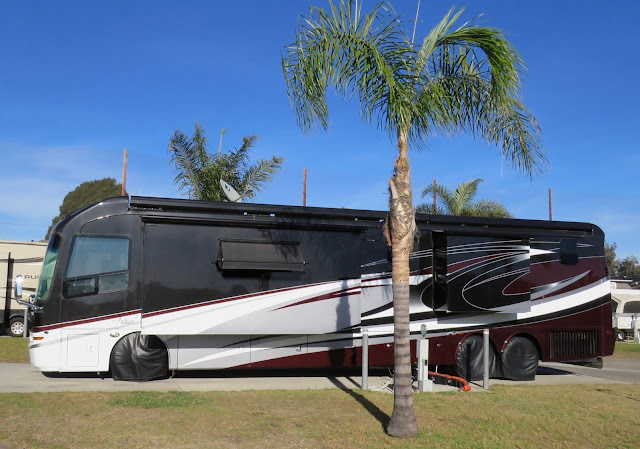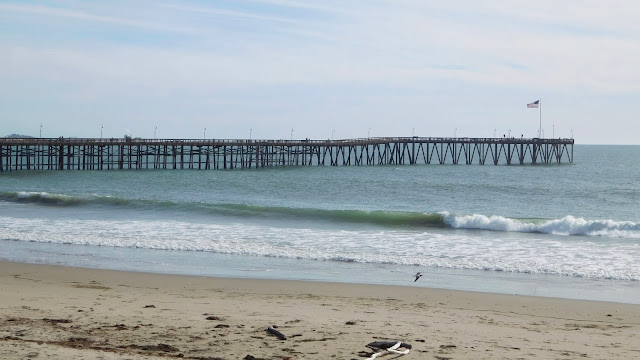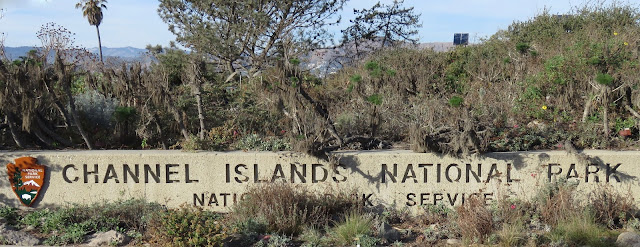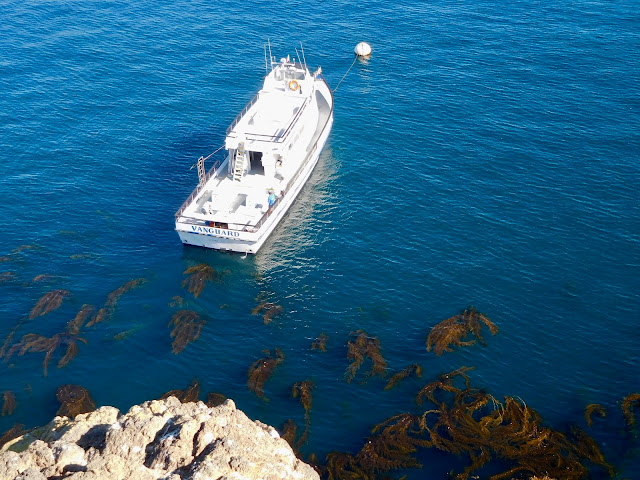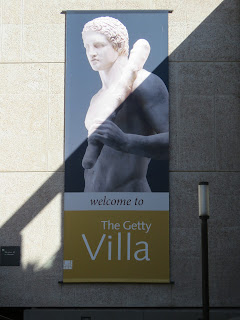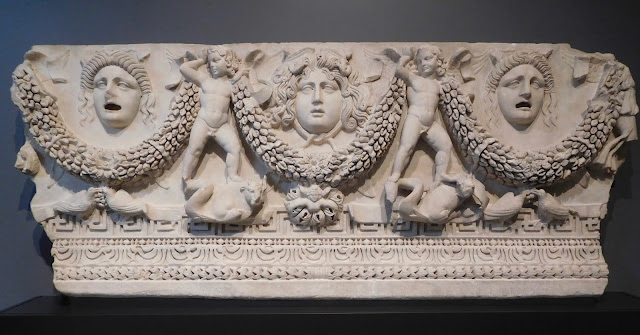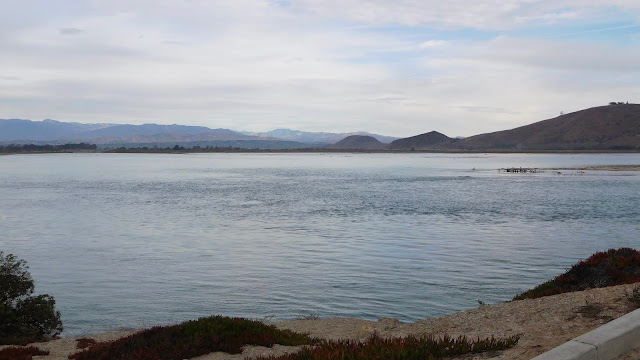“With willing hearts and skillful hands, the difficult we do at once. The impossible takes a bit longer!” Seabee Memorial at Arlington National Cemetery
 |
| The Seabee Moto |
Carol writes: A year ago we spent the 2016 holiday season at Naval Submarine Base Kings Bay on the Georgia coast. This past year our trail has led us cross-country all the way to the Pacific coast. Our much anticipated arrival at the Port Hueneme campground at Naval Base Ventura County
marked the final stop in 2017’s year of travel from the East coast to the West coast.
At the Seabee Museum just outside the gate, we took time to learn about heroic Seabee contributions to our country, most notably in time of war, but also during countless peacetime humanitarian disasters throughout the world, such as in the aftermath of the Haitian earthquake.
We found it delightful to be back at the beach once again—at the ever-fascinating pier at Oxnard
with its uncrowded beach, where I revived my fascination with hunting for sea glass,
and at the surfer beach in Ventura where the water was bustling this day with diehard surfers,
some even with kites.
As we luxuriated on this lovely beach at Ventura, little did we know that within a week a fire would begin in the foothills above the valley along State Route 126, the very road that we drove to get to the coast. The fire began on Dec 4th near the campus of Thomas Aquinas College and thus was given the name of the “Thomas Fire.” Within a few days the hills above the coastal city of Ventura
were set ablaze by the largest wildfire in California history. For the better part of 3 weeks, hot, dry and powerful Santa Ana winds fanned the flames. We closely monitored the wind direction of this unrelenting inferno and its suffocating smoke. At one point during the first week of the fire, air quality in our campground became so bad that going outdoors wasn’t a wise choice.
The Thomas Fire began two weeks after our arrival at Port Huemene. Prior to that, we had already begun on our bucket list for this part of the California coast. At the top of the wish list was a visit to Channel Islands National Park, 12 miles from the mainland.
We opted for a boat excursion to 5-mile-long Anacapa Island,
one of the smallest of the five Channel Islands, because we wanted to do some hiking on trails free of trees that might block visibility, as was the case on some of the larger islands.
As part of a National Marine Sanctuary, Anacapa Island embodied the pristine wilderness that coastal southern California once was.
As we approached the iconic arch and lighthouse near the landing cove on Anacapa, we knew we were in for a very special day.
The sky was clear, the sun was glorious, and we were eager to disembark at the dock and get to the top of the steps that wound their way up Anacapa’s volcanic cliff face.
For the next 4 hours, the hills and trails of Anacapa were ours to explore as our ride back waited for us down below in the calm, clear waters of a kelp bed.
The unusual vegetation on Anacapa
and the unobstructed views were marvelous
as we headed out on our own in the opposite direction of the ranger-led hike.
The goal was lunch on the furthest point of the trail at Inspiration Point.
We happily snapped “trophy pics” at the lunchtime viewpoint,
then took time for a serious picnic lunch.
Before we had even finished our sandwiches, in the distance we noticed a fast-moving fog bank headed straight for the island. We had only a matter of minutes to snap a few more scenic pics
before we were entirely engulfed in fog. This unforeseen sudden change in the weather certainly made for an eerie walk back.
However, we were well satisfied with quite a memorable national park experience in the tranquil wilderness of the “California Galápagos” in the Channel Islands.
California is famous for a series of 21 Franciscan missions that were established up and down the coast in order to bring the Christian faith to the Native American peoples of what was then known as New Spain.
Father Junipero Serra, who was declared a saint in 2015, personally dedicated the Mission of San Buenaventura in 1782. Like many of the California missions we have visited, San Buenaventura’s architectural style was quintessential mission—
lovely and peaceful.
The church itself certainly encouraged spiritual feelings,
while the TV inside the confessional at the Visitor Center evoked a quiet laugh.
Just a couple of days before the Thomas Fire broke out, we visited Leo Carrillo State Park, where we enjoyed a picnic lunch on the beach,
then explored its well-known tidal pools.
The still water in the tidal pools permitted crystal clear photographs.
Thank goodness for people like Leo Carrillo for whom this state park was named, for he was instrumental in acquiring many miles of California coast for state preservation, thus saving it from stifling overdevelopment. Interestingly, Mr. Carrillo was well known in another aspect of his life when he was featured as the comic sidekick in the TV series “The Cisco Kid.”
Following a day in Los Angeles at the Getty Center at the beginning of our travels in 2015, we added a visit to another Getty property called the Getty Villa to our long-range bucket list. We weren’t quite sure what we would see at the Getty Villa, aside from what was billed as a world-class collection of ancient art treasures that were amassed by J. Paul Getty and his surviving family members. It turned out that the Getty Villa had marvelous landscaping that complemented a series of buildings that were modeled after a Roman country house that was buried by the eruption of Mt. Vesuvius in 79 A.D.
To our eyes this was a brilliant style choice for a venue to exhibit Getty’s amazing collection of ancient Roman, Greek and Etruscan art treasures. Some of the most outstanding pieces in the collection included:
a mummy with vibrantly painted wrappings,
a mummy with vibrantly painted wrappings,
an intricately carved sarcophagus,
Perhaps in part because we didn’t quite know what to expect, our day at the Getty Villa exceeded expectations. … In fact, on the way home we weren’t bothered all that much by a hefty dose of pesky California rush hour traffic.
POINT MUGU
We spent a month at Port Hueneme, then moved less than 10 miles to the Point Mugu Naval Air Station campground for Christmas and New Year’s.
Point Mugu is the home of the E-2C Hawkeye, an airborne early warning and control aircraft,
and we saw and heard many a Hawkeye overhead during our 2-week stay. In camp, flagpoles with American flags mixed in with a sprinkling of various service branch flags and a few sports team flags were the accessory of the day.
With easily recognizable Point Mugu in the distance,
beach walks were a twice-a-day ritual during our simple days of downtime.
We got plenty of miles on our trackers as we checked out the tides at the estuary,
where we were entertained by watching the Pacific Harbor Seals as they snoozed at low tide,
then frolicked in the estuary waters with their faces just out of the water during the super high tide of the full moon.
Slack water (the moment when the tide shifts from ebb to flow) over Point Mugu was especially lovely this partly cloudy morning,
as were the Channel Islands of Anacapa and Santa Cruz which were sharply visible offshore in the distance.
Closer at hand was an osprey looking from on high for his next meal this fair morning.
Yes indeed, it sure felt good to be back on the Pacific coast. With dear family so very far away at Christmas, camping on the beach at Point Mugu turned out to be the runner-up near-perfect holiday plan. This was our first experience parking our ‘big bus’ smack dab on the shore of a Pacific beach campground. Once again, sunsets were over the water… and to Al’s way of thinking, that’s the way it outta be…
